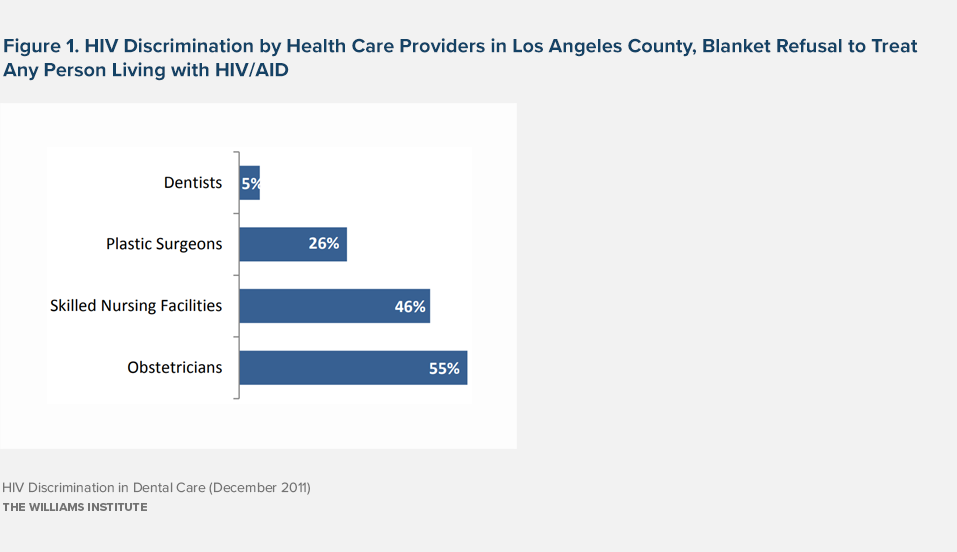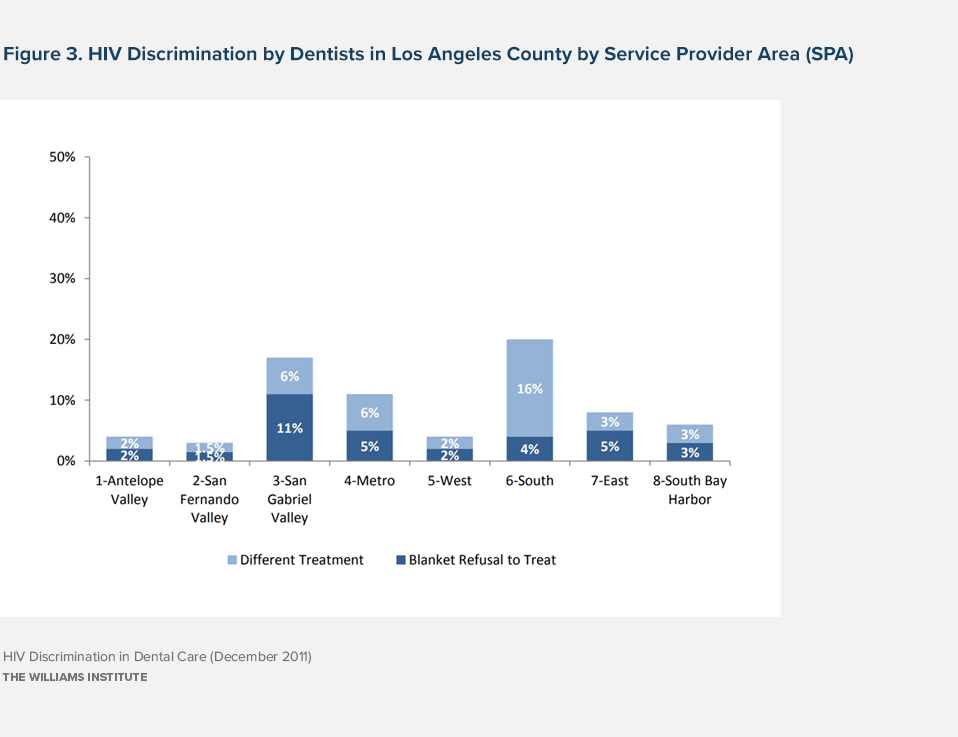Executive Summary
This study used trained testers to measure the level of HIV discrimination by dentists in Los Angeles County. In total, 612 dentists’ offices were contacted in 2007 and 2008. We find that levels of HIV discrimination are lower in dental care than other health care services in Los Angeles County. However, levels of discrimination are twice as high for people living with HIV/AIDS (PLWHA) who had Denti-Cal, and three times higher for those living in the San Gabriel Valley and South SPAs. Discrimination was also higher among older dentists and dentists who did not go to dental school in the United States. The findings suggest the need for more targeted education efforts to ensure equal access to dental services for all PLWHA.


